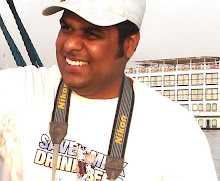Flamenco exists in three forms: Cante (the song), Baile (the dance) and Guitarra (guitar playing). Early Flamenco seems to have been purely vocal, accompanied only by rhythmical clapping of hands, toque de palmas.
I was lucky enough to enjoy Flamenco at its birth place, can say it a gift of life time.
I did (so as every one) really enjoyed the Baile form of Flamenco.
A little about El baile flamenco, it is a highly-expressive dance form, specially known for its emotional sweeping of the arms and rhythmic stomping of the feet. While flamenco dancers (bailaores and bailaoras) invest a considerable amount of study and practice into their art form, the dances are not choreographed, but are improvised along the palo or rhythm.
In addition to the percussion provided by the heels and balls of the feet striking the floor, castanets are sometimes held in the hands and clicked together rapidly to the rhythm of the music. Sometimes, folding fans are used for visual effect.
Shooting flamenco dance was really challenging for me, especially the low lighting and the fast movements of the dancers. I ruled out the use of flash since it might not only put the dancers and audiences into discomfort but also will spoil the ambience which I wanted to capture as it is.
I was lucky enough to enjoy Flamenco at its birth place, can say it a gift of life time.
I did (so as every one) really enjoyed the Baile form of Flamenco.
A little about El baile flamenco, it is a highly-expressive dance form, specially known for its emotional sweeping of the arms and rhythmic stomping of the feet. While flamenco dancers (bailaores and bailaoras) invest a considerable amount of study and practice into their art form, the dances are not choreographed, but are improvised along the palo or rhythm.
In addition to the percussion provided by the heels and balls of the feet striking the floor, castanets are sometimes held in the hands and clicked together rapidly to the rhythm of the music. Sometimes, folding fans are used for visual effect.
Shooting flamenco dance was really challenging for me, especially the low lighting and the fast movements of the dancers. I ruled out the use of flash since it might not only put the dancers and audiences into discomfort but also will spoil the ambience which I wanted to capture as it is.
Now I present you the authentic Spanish delight captured through my camera lens.
 Nikon D80, 18-135mm lens at 38 mm, 1/30 F4.5, ISO 100
Nikon D80, 18-135mm lens at 38 mm, 1/30 F4.5, ISO 100





Nikon D80, 18-135mm lens at 40 mm, 1/100 F4.5, ISO 100

Nikon D80, 18-135mm lens at 80 mm, 1/100 F5.6, ISO 100

Nikon D80, 18-135mm lens at 80 mm, 1/30 F5.6, ISO 100

Nikon D80, 18-135mm lens at 58 mm, 1/60 F5.3, ISO 100

Nikon D80, 18-135mm lens at 58 mm, 1/20 F5.3, ISO 100

Nikon D80, 18-135mm lens at 70 mm, 1/20 F5.6, ISO 100

Nikon D80, 18-135mm lens at 58 mm, 1/125 F5.3, ISO 100

Nikon D80, 18-135mm lens at 50 mm, 1/60 F5, ISO 100

Nikon D80, 18-135mm lens at 44 mm, 1/30 F4.8, ISO 100
A foot note, one more challenge I had in shooting the above pictures was that I used a new camera that i have handeled only for 2 days.

1 comment:
And you seemed to have handled the new camera with ease!!! Nice photos and write-up! Also looks like you got a good spot to shoot from
Post a Comment